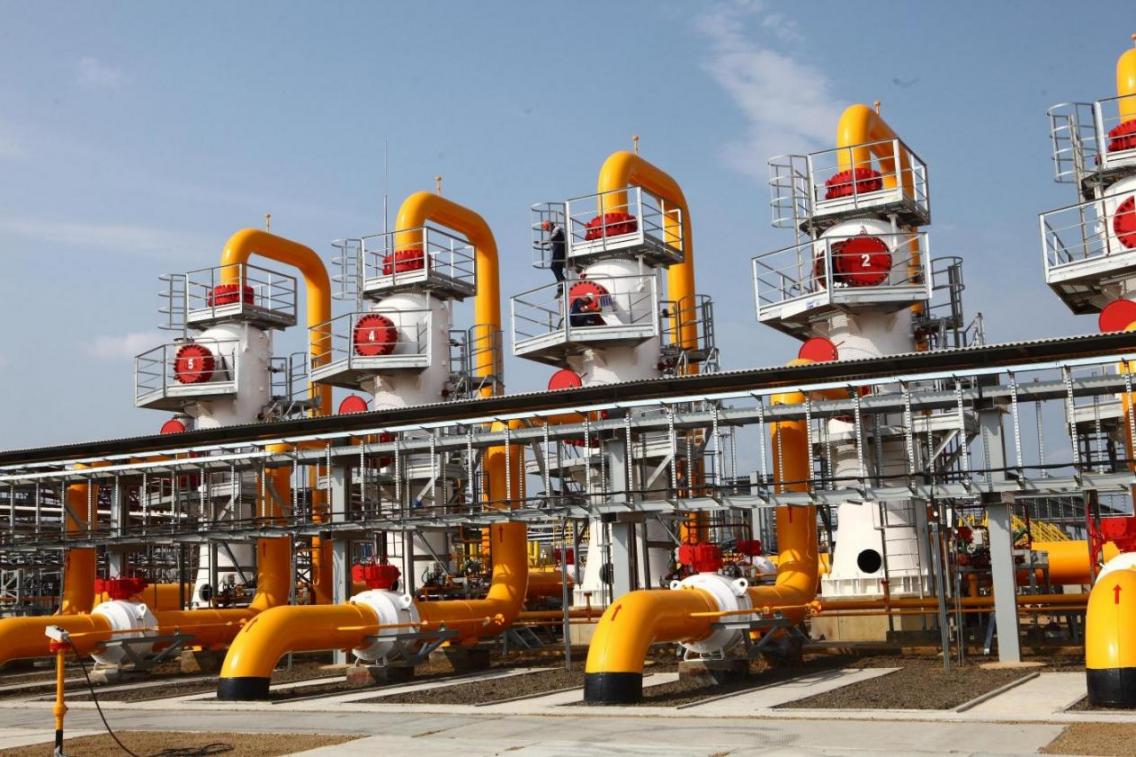With the two natural gas compressor stations going into operation in Isfahan Province in the coming weeks, gas supply to mountainous regions in the central, northern, and north-western regions will further stabilize, IRNA reported on Monday.
Dahagh and Pol-Kaleh compressor stations, located on the 4th pipeline of the Iran Gas Trunkline (IGAT), will go on stream by January 21, and March 21, respectively.
A total of six compressor stations are scheduled to start operation in the current Iranian calendar year (ending March 20), the most important of which is the Kheirgou compressor station on IGAT 4, said Ali-Akbar Maraati, the natural gas compressor station director at the National Iranian Gas Company (NIGC) on Monday.
Dasht compressor station, located northeast of the country, will also come into operation by yearend, Maraati said, adding that the station must start operation as soon as possible in case Turkmenistan halts gas exports to Iran.
Construction of a compressor station on IGAT 8, and laying the IGAT 6 pipeline top the list of the NIGC's projects for next year. Since funding for gas projects is limited, the NIGC has prioritized available funds so as to carry out projects with greater importance first.
The prioritization scheme allowed the NIGC to construct six compressor stations, namely Hamedan, Bijar, Kheirgou, Dasht, Dahagh, and Pol-Kaleh within the current year.
Design and construction of Dahagh and Pol-Kaleh compressor stations were fulfilled at a cost of $126.3 million, and over a period of 30 months. IGAT4, 56 inches (1,420 mm) in diameter, transfers natural gas produced in South Pars phases 1 to 5 from Asalouyeh to Fars and Isfahan provinces.
More than 119 billion cubic meters of gas was pumped into the national grid in March-December period, nearly 13 percent more than the same period last year.
Currently, South Pars gas output, standing at 300 million cubic meters per day, supplies 72 percent of the country's total gas consumption. There are plans to increase gas output in the South Pars gas field in the Persian Gulf by 100 mcm/d, of which 75 mcm/d has been fulfilled.
South Pars is the world's largest gas field, shared between Iran and Qatar, covering an area of 3,700 square kilometers of Iran's territorial waters in the Persian Gulf. It adjoins Qatar’s North Field, which measures 6,000 square kilometers.
Self-Reliance in Pipe Laying
Despite the international sanctions imposed on its energy sector, Iran has reached self-reliance in all aspects of pipe laying projects, except for turbo compressors, Maraati noted. A turbo compressor purchase agreement was signed with Siemens and a Ukrainian company 10 years ago, requiring the two companies to supply Iran with 50 turbo compressor units. Nevertheless, the companies did not comply with the terms of agreement and provided only four units, citing sanctions as a major obstacle in supply of energy-related commodities to Iran.
In line with the ‘self-reliance policy’ adopted by the NIGC after the imposition of sanctions, a contract was signed with Oil Turbo Compressor Group (OTC) and MAPNA Group for production and purchase of 200 turbo compressor units. Likewise, from 200 units only 58 were handed over to the NIGC.
"We have negotiated with the two companies, and they are expected to provide one unit per month so that the NIGC can proceed with the projects," said the official. The US and its allies imposed an array of sanctions on Iran to curb the country's nuclear program which they believe could potentially seek military purposes, but Iran insists that its program is peaceful. Iran and the P5+1 (five permanent members of the UN Security Council, namely United States, Russia, China, United Kingdom, and France, plus Germany) are negotiating to reach a mutually acceptable agreement by July.
Iran holds the world’s second biggest natural gas reserves after Russia, and the fourth-largest proven crude oil reserves. It holds 17% of the world's proven natural gas reserves and more than one-third of OPEC's reserves. South Pars is estimated to hold roughly 40% of the country's gas reserves. However, the vast majority of the reserves are undeveloped. Experts say lifting of sanctions will allow renewed international investment in the gas fields.


